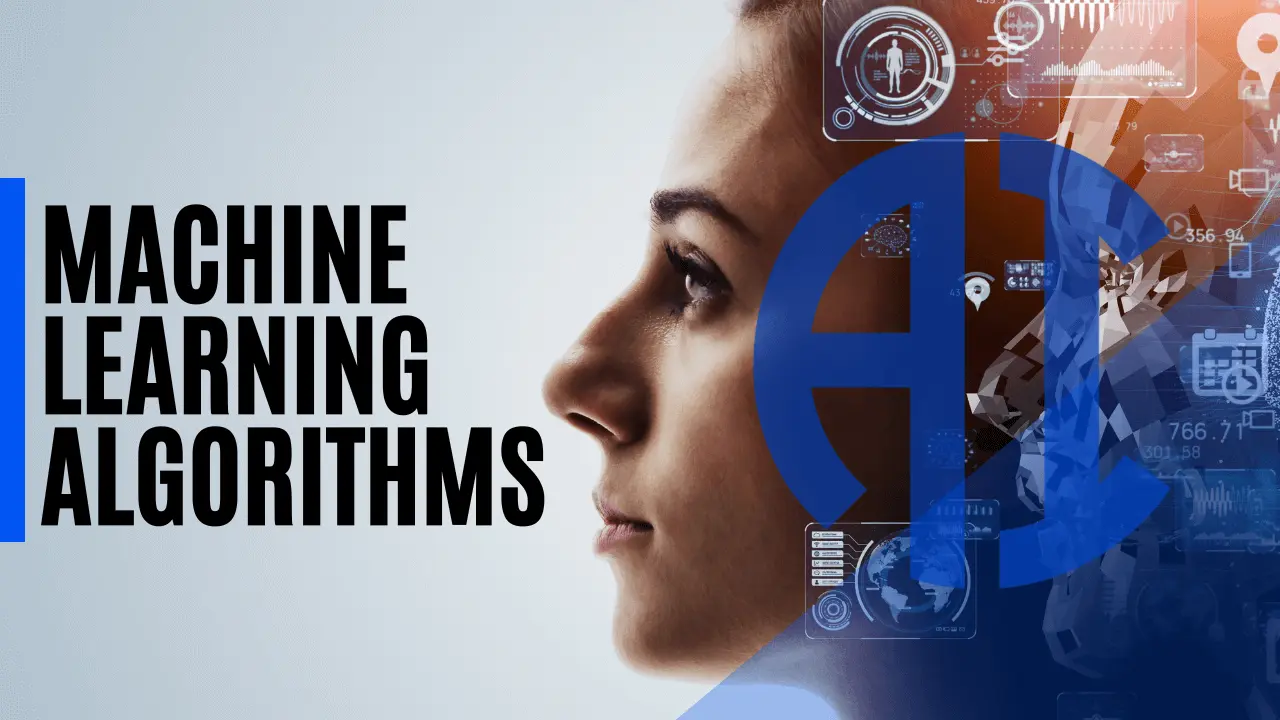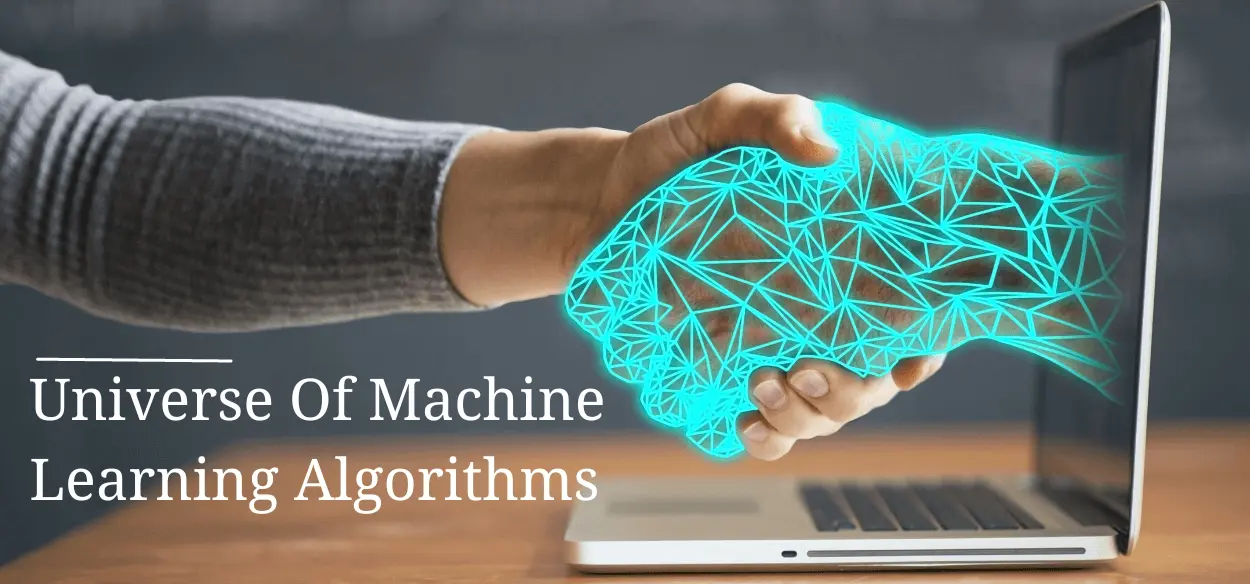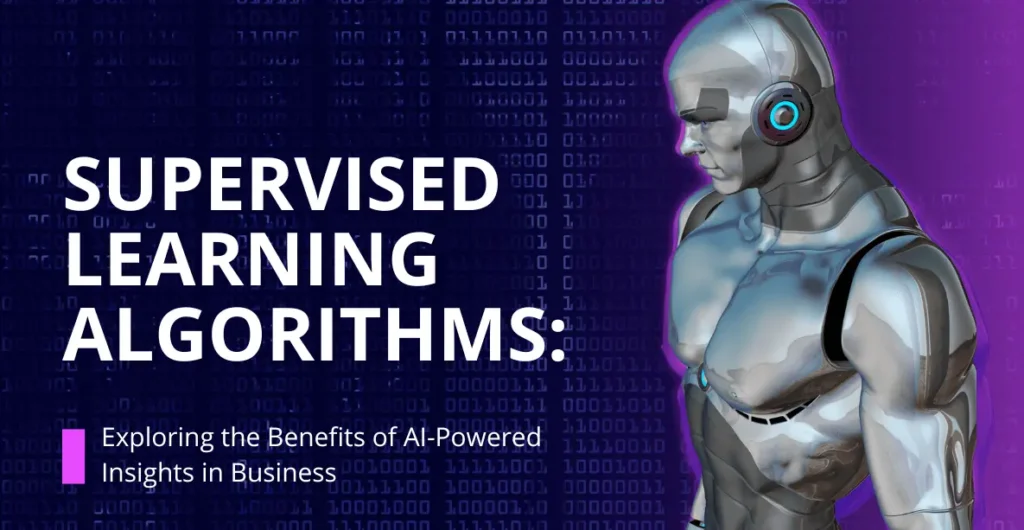
Machine Learning Algorithms: A Comprehensive Overview
Data Science
- John Quarrie
- September 20, 2023
Introduction:
In today’s technology-driven landscape, machine learning is a transformative force, reshaping industries, powering innovations, and influencing our daily lives. This blog post offers an illuminating journey into machine learning algorithms, aiming to provide a comprehensive understanding of this exciting field. As traditional programming methods encounter limitations, machine learning emerges as the key to unlocking the hidden potential in vast datasets. We’ll explore the three core types of machine learning: Supervised, Unsupervised, and Reinforcement Learning, shedding light on their distinct applications and significance.
From linear regression to deep neural networks, we’ll dive into popular algorithms, demystifying their inner workings and real-world relevance. Furthermore, we’ll touch on essential libraries, challenges, ethical considerations, and the compelling prospects in the ever-evolving landscape of machine learning. Join us on this enlightening journey to unravel the secrets of machine learning’s past, present, and future.
Exploring the Universe of Machine Learning Algorithms
1. Understanding Machine Learning:

Understanding machine learning is fundamental in today’s tech-driven world. At its core, machine learning is a subset of artificial intelligence that empowers computers to learn and make decisions from data without being explicitly programmed. Traditional programming relies on specific rules and instructions; algorithms evolve and improve in machine learning as they process more data. This approach enables systems to recognize patterns, predict, and adapt to changing circumstances.
Machine learning can be categorized into three main types: supervised, unsupervised, and reinforcement. In supervised Learning, algorithms are trained on labeled data to make predictions or classifications. Unsupervised Learning involves clustering and dimensionality reduction without labeled data. Reinforcement learning focuses on decision-making and rewards, typically used in gaming and robotics. Understanding machine learning opens the door to various applications across industries, from healthcare and finance to autonomous vehicles and recommendation systems, making it an essential field in the ever-evolving landscape of technology.
2. Types of Machine Learning:
Machine learning encompasses three primary types, each with distinct characteristics and applications:
a. Supervised Learning:
- Definition: In supervised Learning, algorithms are trained on a labelled dataset, which means the input data is paired with the correct output or target. The objective was to develop a transfer from inputs to results.
- Examples: It’s commonly used in tasks like image classification, language translation, and predicting house prices.
- Use Case: Supervised Learning is ideal when you have historical data with known outcomes and want to make predictions on new, unseen data.
b. Unsupervised Learning:
- Definition: Unsupervised Learning involves working with unlabeled data, where the algorithm seeks to find patterns, structures, or groupings in the data without predefined categories.
- Examples: Clustering similar customers for targeted marketing, reducing dimensionality in data for visualization or feature selection.
- Use Case: Unsupervised Learning is beneficial when exploring the inherent structure within data and discovering hidden insights.
c. Reinforcement Learning:
- Definition: Reinforcement learning focuses on the interaction of an agent with an environment. The agent learns by making mistakes and switching behaviors to get the most beneficial signal.
- Examples: Applications include training robots to perform tasks, optimizing resource allocation in supply chains, and teaching computers to play complex games.
- Use Case: Reinforcement learning is useful when you need an agent to learn how to make sequential decisions in dynamic environments.
These three types of machine learning cover many problems and tasks, making machine learning a versatile field with applications in various domains, from healthcare and finance to robotics and natural language processing. The choice of which type to use depends on the specific problem you aim to solve and the data availability.
3. Supervised Learning Algorithms:
Supervised Learning is a category of machine learning where algorithms are trained on a labeled dataset, meaning that each input data point is associated with a known output or target. The primary goal of supervised Learning is to learn a mapping or relationship between inputs and outputs so that the algorithm can make accurate predictions or classifications on new, unseen data.

a. Linear Regression:
- Purpose: Used for regression tasks that aim to predict a continuous numerical value.
- How it works: It finds the best-fit linear equation that describes the relationship between input features and the target variable.
b. Decision Trees:
- Purpose: Suitable for both regression and classification tasks.
- How it works: It divides the dataset into subsets based on the most significant attributes, creating a tree-like structure to make decisions.
c. Random Forest:
- Purpose: Ideal for classification and regression tasks when high accuracy and robustness are required.
- How it works: It consists of multiple decision trees and the final prediction is made by averaging or voting from individual tree predictions.
d. Support Vector Machines (SVM):
- Purpose: Used for classification tasks, especially when dealing with complex decision boundaries.
- How it works: SVM finds the hyperplane that maximizes the margin between different classes while minimizing classification errors.
e. Neural Networks (Deep Learning):
- Purpose: Suitable for various tasks, including image recognition, natural language processing, and more.
- How it works: It consists of layers of interconnected nodes (neurons) that process data hierarchically, making it capable of learning complex patterns.
f. Naive Bayes:
- Purpose: Commonly used for text classification and spam filtering.
- How it works: It applies Bayes’ theorem to calculate the probability of a data point belonging to a particular class.
These algorithms have strengths and weaknesses, making them suitable for different problems. Choosing the right supervised learning algorithm depends on factors like the nature of your data, the problem you’re trying to solve, and the level of interpretability or accuracy required for your application.
4. Unsupervised Learning Algorithms:
Unsupervised Learning is a category of machine learning where algorithms work with unlabeled data, meaning there are no predefined categories or target outputs. The primary goal of unsupervised Learning is to discover hidden patterns, structures, or relationships within the data. Here are some common unsupervised learning algorithms:
a. K-Means Clustering:
- Purpose: Used for clustering similar data points into groups or clusters.
- How it works: It partitions the data into K clusters, each represented by its centroid. Data points are assigned to the nearest centroid.
b. Hierarchical Clustering:
- Purpose: It is also used for clustering but creates a hierarchical representation of clusters.
- How it works: It builds a tree-like structure of clusters, making it useful for visualizing data at different granularity levels.
c. Principal Component Analysis (PCA):
- Purpose: Used for dimensionality reduction, feature selection, and data visualization.
- How it works: PCA identifies the most important dimensions in the data by finding orthogonal vectors (principal components) that capture the most variance.
d. Autoencoders:
- Purpose: Commonly used for feature learning and data compression.
- How it works: Autoencoders consist of an encoder and a decoder, and they learn to encode and decode data while minimizing reconstruction errors.
e. DBSCAN (Density-Based Spatial Clustering of Applications with Noise):
- Purpose: Ideal for clustering data with irregular shapes and varying densities.
- How it works: DBSCAN defines clusters as dense regions separated by sparser areas and can identify noise points.
f. Gaussian Mixture Models (GMM):
- Purpose: Used for modeling data as a mixture of Gaussian distributions.
- How it works: GMM represents the data as a combination of several Gaussian distributions, particularly useful for modeling complex data distributions.
Unsupervised learning algorithms are valuable for pattern recognition, anomaly detection, and data exploration tasks. They are especially helpful when you want to gain insights from data without prior knowledge of the underlying structure or to reduce the dimensionality of high-dimensional data for easier analysis and visualization. The choice of algorithm depends on the specific unsupervised learning task and the characteristics of the data you are working with.
5. Reinforcement Learning:
Reinforcement Learning (RL) is a subset of machine learning where an agent learns to make sequences of decisions by interacting with an environment. Unlike supervised Learning, where algorithms are trained on labeled data, and unsupervised Learning, where algorithms find patterns in unlabeled data, RL focuses on learning through trial and error.
Key components of reinforcement learning:
- Agent: The entity that learns and makes decisions. It takes actions based on its current knowledge and interacts with the environment.
- Environment: The external system with which the agent interacts. It provides feedback to the agent in the form of rewards or penalties based on the actions taken by the agent.
- State: A representation of the current situation of the environment. It encapsulates all the information the agent needs to make decisions.
- Action: The choices that the agent can make to influence the environment. The set of possible actions is called the action space.
- Reward: A numerical value the environment provides after each agent’s action. It serves as feedback to the agent, indicating whether the action was beneficial or detrimental.
The main objective in reinforcement learning is for the agent to learn a policy—a strategy or mapping from states to actions—that maximizes the cumulative reward over time. The agent explores different actions to learn which ones lead to better outcomes.
Reinforcement learning algorithms include:
- Q-Learning: A model-free RL algorithm that learns the quality of actions (Q-values) for each state-action pair.
- Deep Q Networks (DQN): An extension of Q-learning that uses deep neural networks to approximate Q-values, making it suitable for high-dimensional state spaces.
- Policy Gradient Methods: Algorithms that directly learn the policy function that maps states to actions.
- Proximal Policy Optimization (PPO): A policy optimization algorithm known for its stability and efficiency.
- Actor-Critic: A hybrid approach combining value-based (critic) and policy-based (actor) methods.
- Monte Carlo Methods: RL algorithms that estimate the value function or policy by sampling episodes.
Reinforcement learning is widely used in various applications, including robotics, game playing (e.g., AlphaZero), autonomous vehicles, recommendation systems, and resource allocation. It is particularly useful in scenarios where the agent needs to make a series of decisions in dynamic and uncertain environments. However, RL can also be challenging due to the exploration-exploitation trade-off and the need for careful tuning and training.
6. Common Machine Learning Libraries:
Common machine-learning libraries are essential tools that simplify and expedite the development of machine-learning models. These libraries provide pre-implemented algorithms, data structures, and utilities, reducing the need for manual coding and accelerating the experimentation process. Some widely used machine learning libraries include TensorFlow, PyTorch, and Scikit-Learn.
- TensorFlow: Developed by Google, TensorFlow is a versatile library known for its deep learning capabilities. It offers a high-level API for rapid model development and deployment and a lower-level interface for greater control.
- PyTorch: PyTorch is praised for its dynamic computation graph, making it highly suitable for deep learning research. Its flexibility and Pythonic approach attract researchers and practitioners alike.
- Scikit-Learn: Scikit-Learn is a user-friendly library that provides a wide range of classical machine learning algorithms. It is ideal for beginners and experts due to its simple, consistent API and excellent documentation.
These libraries empower developers and data scientists to easily implement complex machine-learning algorithms, enabling them to focus on problem-solving and innovation rather than reinventing the wheel.
7. Future Trends in Machine Learning:
The future of machine learning promises to be dynamic and transformative, with several emerging trends shaping the field:
- Explainable AI: As AI systems become more complex, there’s a growing need for making their decision-making processes transparent and interpretable, especially in critical domains like healthcare and finance.
- Quantum Machine Learning: Integrating quantum computing with machine learning holds the potential for solving complex problems exponentially faster, revolutionizing areas such as cryptography and optimization.
- Federated Learning: Privacy concerns drive the development of federated Learning, allowing model training on decentralized data without exposing sensitive information, making it ideal for applications in healthcare and finance.
- AutoML: Automation of machine learning model development, known as AutoML, will democratize AI by enabling non-experts to build models efficiently.
- AI Ethics and Regulation: Increasing focus on ethical AI development and regulations to ensure fairness, transparency, and accountability.
- AI in Edge Computing: The deployment of AI models on edge devices, reducing latency and enabling real-time decision-making
These trends reflect the ever-evolving nature of machine learning, promising exciting opportunities for innovation and applications across various industries.
Conclusion:
In conclusion, this comprehensive overview of machine learning algorithms has taken us on a journey through the heart of a transformative field reshaping industries, influencing decision-making processes, and powering innovations across the globe. We’ve explored the fundamental types of machine learning—supervised, unsupervised, and reinforcement learning—each with its unique purpose and applications. We’ve delved into the world of common machine-learning libraries that expedite the development of models and provide tools for both beginners and experts.
However, it’s crucial to acknowledge the challenges and ethical considerations that accompany the immense potential of machine learning. Responsible AI development is paramount, from data quality and interpretability to fairness and transparency.
FAQs:
1. What is machine learning, and why is it important?
Machine learning is a subset of artificial intelligence that enables computers to learn and make predictions from data without being explicitly programmed. It’s important because it empowers automated decision-making, pattern recognition, and predictive modeling in various fields, improving efficiency and insights.
2. What are the main types of machine learning?
The primary types are Supervised Learning (labeled data), Unsupervised Learning (unlabeled data), and Reinforcement Learning (interaction with an environment).
3. Can you explain the difference between supervised and unsupervised Learning?
Supervised Learning uses labeled data for training and involves making predictions or classifications. Unsupervised Learning works with unlabeled data to discover patterns, groupings, or structures in the data.
4. What are some popular machine learning algorithms for beginners?
Beginners can start with algorithms like Linear Regression, K-means clustering, or Decision Trees, which are relatively easy to understand and implement.
5. How do I choose the right machine learning algorithm for my project?
The choice depends on your data type (structured or unstructured), the problem you’re solving (classification, regression, clustering), and the specific requirements of your project. Consulting with experts or conducting experiments is often necessary.
6. What are some common challenges in machine learning?
Challenges include:
- Data quality issues.
- Overfitting.
- Feature engineering complexities.
- Ethical considerations.
- The need for substantial computational resources for deep Learning.
7. Are there any free machine learning libraries available?
Several free and open-source machine learning libraries, such as Scikit-Learn, TensorFlow, and PyTorch, provide many tools and resources for building machine learning models.
8. How can I stay updated with the latest trends in machine learning?
Staying updated involves reading research papers, following blogs, attending conferences, and participating in online courses or forums dedicated to machine learning and AI.
9. What is the future of machine learning?
The future of machine learning is expected to involve quantum computing integration, more explainable AI, federated Learning, and increased emphasis on ethics and regulation to ensure responsible AI development.
10. Is machine learning suitable for my industry/application?
Machine learning can be applied to various industries and applications, including healthcare, finance, retail, and more. Consultation with experts can help determine its suitability for your specific use case.

